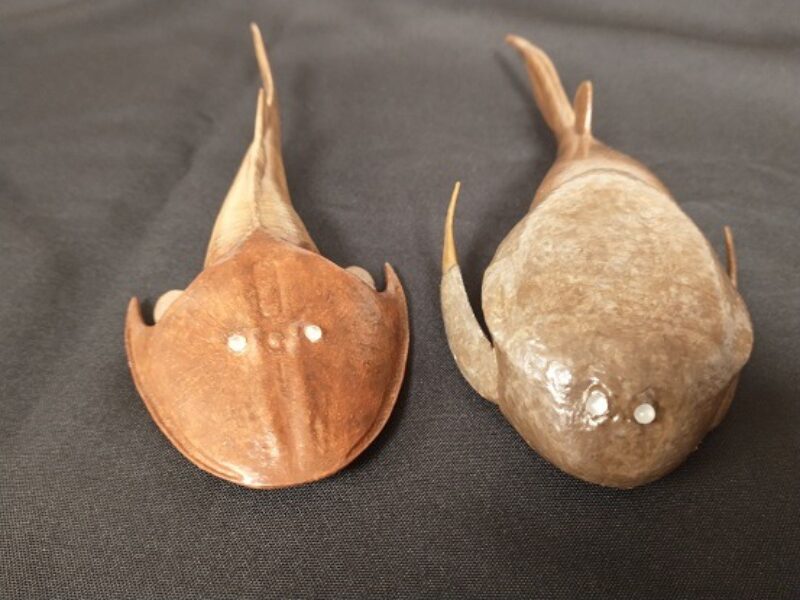New science exhibit on campus will bring “bottom feeders” to the top

If the creatures in the photo look like something from a nightmare, then you were probably having a bad dream– 400 million years ago.
The jawless fish Cephalapsis (left) and Bothriolepsis (right) thrived during the Devonian Era of geologic time. Both of these bottom feeders sifted through the silts of sea beds in search of food, with prominent head shields to protect them while slinking along dark depths.
Models of these prehistoric fish, along with many other science education examples, will be on display soon in exhibit cabinets near Main Building Room 122, part of the “physics hallway” on Clifton Campus.
Physics Department Chair Ryan Schmidt envisions a mini-museum that will “get our students engaged, educated, and maybe interested in enrolling in physics and physical sciences courses.”
Many of the exhibit items will be 3D printed models, detailed and finished by Terry Endres as part of his role as a lab technician for the Physics department.
“I was thrilled to hear Ryan share this idea,” Terry said. “I’ve been a scale model builder for over 50 years, and now I can apply my experience contributing to this project.”
One exhibit cabinet will feature Earth Sciences materials and the other will be dedicated to Physics and Astronomy. The target completion date for the exhibit is Fall Semester 2023.
Terry has recruited several other faculty members to help build the mini-museum, with students participating in the project also.
- Zane Decker will lead Mechanical Engineering students in printing 3D models as part of their training.
- Mechanical Engineering students in Autodesk classes with adjunct instructor Emmanuel Ivenso will create printable 3D models for items not yet available or too expensive to download.
- Graphic Design students directed by Joel Knueven will produce display backgrounds and bulletin board materials. “This is a great way to celebrate our students’ work as part of a permanent installation,” Joel observed.
- Dave Killen will help Audio/Video Production students prepare short narrated videos (accessible via QR codes) that will provide extended information about the exhibit content. Pam Ecker has offered editorial support for the video scriptwriting.
All students who participate will be recognized in the exhibit “credits,” and additional QR codes will link visitors to information about the academic programs that are involved in creating the materials.
Ryan Schmidt said, “Terry’s plan for the mini-museum fosters symmetry of science, engineering, and the arts– I’m looking forward to the outcome!”